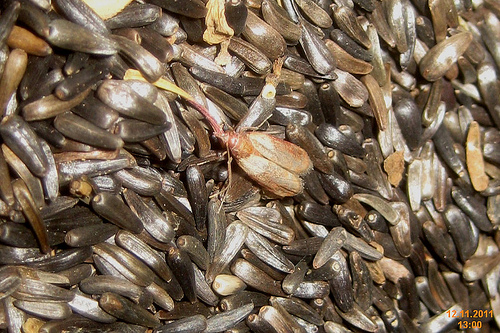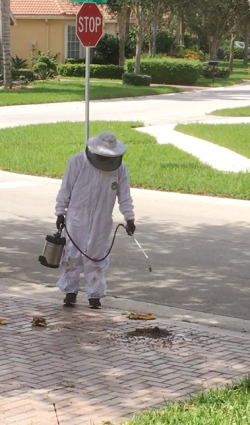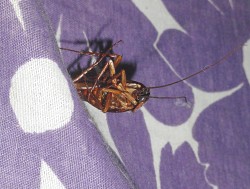DIY Indian Meal Moth Removal

Indian meal moths in a bin of sunflower seeds. Photo by davidshort/Flickr.
Have you ever gone to grab a bag of rice, only to find a few of the “grains” . . . moving? Or opened a canister of flour and noticed a strange clumpy stickiness going on? Ugh, that sinking feeling. MOTHS!
Most people have dealt with them at one time or another, and so we all know what a pain in the butt they can be. Those small, grayish-brown fluttering destroyers of food are called Indian Meal Moths. Not to be confused with the Almond Moth . . . well actually, does it really matter if you confuse them? They’re both beastly little demons and they both require immediate attention.
These common pantry pests feed on grains and grain-based foods, such as cereal, rice, bread, pasta, and flour. They can also be found in pet food, nuts/seeds, dried fruits, and spices. The adults are those tiny gray-brown moths, and the caterpillars are small and cream-colored with a brown or orange head. You know the ones.
They’re notoriously difficult to get rid of.
Look for evidence.
If you suspect you might have moths in your kitchen, you’ll need to search for some of the characteristic signs. You may not see the larvae, but keep your eyes peeled for that “webbing” effect in your food – when you shake the rice or tip the cereal bag, some of the pieces will cling together. That’s a signal you’ve got a problem. Clumping in your flours may also indicate an invasion. Finally, even just seeing the adult moths in or near your kitchen should raise alarm bells. Not all moths are bad, but small ones who fly in a zigzag pattern? EVIL.
Purge and purify.
Okay, so you’ve got a moth infestation. First you’ll need to toss anything they may want to eat – at least anything that wasn’t VERY tightly sealed. Plastic bags don’t cut it, since the moths can chew through plastics, as well as cardboard. Work through your entire kitchen and gather up anything they may be interested in. Remember, that includes all grains and grain-based foods like pasta, bread, couscous and flours, plus dried fruits, nuts/seeds and possibly even spices. Pet food too!
To dispose of infested food, bury it in the yard or wrap it up very well before placing in the garbage can.
When you’re clearing and cleaning, don’t forget about the spills. Moths can breed in even the smallest pile of grain or flour, so wash those countertops, vacuum out that pantry, then sweep and mop all the floors.
Prevention is key.
If you want to avoid another round of battle, there are a couple of precautions you can take. Traps are available, but they’re often unreliable and should not be used as the only preventive action. Still, they can definitely be an effective part of the effort.
The most important measures to prevent reinfestation are:
- buy grains and similar products from a clean store with quick turnover
- purchase infrequently used foods in small quantities
- always store food in tightly sealed containers
- ventilate food storage areas well to avoid moisture buildup, which attracts insects
- store grain products in glass jars or in the freezer
Be diligent in your pest control efforts, and you’ll be able to avoid another Indian Meal Moth invasion.
Sayward Rebhal writes for Networx.com.
Updated and edited October 7, 2018.
Looking for a Pro? Call us (866) 441-6648

Pest control Average Costs
Exterminators Experiences

Pest Control For Bee Problem So Bad We Were Afraid To Go Outside

Pest Control Got Rid Of Bedbugs From A "Bargain" Headboard



